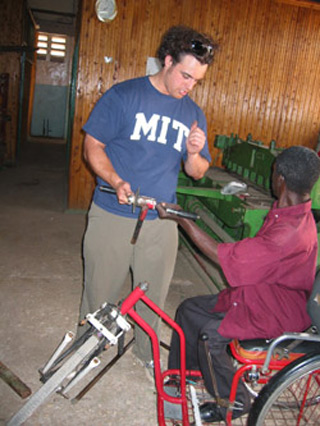Course Description
According to the United States Agency for International Development, 20 million people in developing countries require wheelchairs, and the United Nations Development Programme estimates below 1% of their need is being met in Africa by local production. Wheelchair Design in Developing Countries (WDDC) gives students …
According to the United States Agency for International Development, 20 million people in developing countries require wheelchairs, and the United Nations Development Programme estimates below 1% of their need is being met in Africa by local production. Wheelchair Design in Developing Countries (WDDC) gives students the chance to better the lives of others by improving wheelchairs and tricycles made in the developing world. Lectures will focus on understanding local factors, such as operating environments, social stigmas against the disabled, and manufacturing constraints, and then applying sound scientific/engineering knowledge to develop appropriate technical solutions. Multidisciplinary student teams will conduct term-long projects on topics such as hardware design, manufacturing optimization, biomechanics modeling, and business plan development. Theory will further be connected to real-world implementation during guest lectures by MIT faculty, Third-World community partners, and U.S. wheelchair organizations.
This class is made possible by an MIT Alumni Sponsored Funding Opportunities grant with additional support from the National Collegiate Inventors and Innovators Alliance (now VentureWell), the MIT Public Service Center, and the MIT Edgerton Center; special thanks to CustomInk.com.
Course Info
Instructors
Departments
Learning Resource Types









